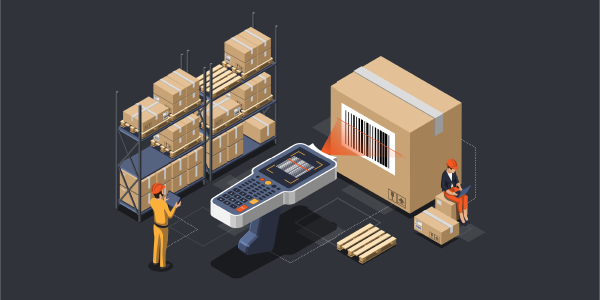Balancing Just-in-Time with Just-in-Case

Supply chain leaders must balance efficiency and cost, with inventory management strategies that incorporate the Lean efficiencies of Just-in-Time with the higher inventory levels of Just-in-Case.
Supply chain best practices have trended toward Lean inventory and production models for decades. The basis of modern Lean practices began with the development of the Toyota Production System in the mid-20th century, with one of the premier concepts of this model being a practice called “Just-in-Time.”
In a Just-in-Time production model, all parts and components used to produce a finished good arrive “just in time” for use on the assembly line.
Under Just-in-Time, manufacturers reduced costs associated with held inventory. This practice spread to retailers and distributors, who implemented Just-in-Time inventory management based on sales projections and forecasts to ensure finished goods would only sit briefly in warehouses.
Over the past decade, Just-in-Time capabilities have been streamlined further thanks to advances in technologies like artificial intelligence and machine learning until every link in the supply chain learned how to carry as little inventory as possible. Then, a pandemic took the world by surprise.
Creating New Best Practices, Just in Case
As outbreaks of COVID-19 shut down production worldwide, businesses realized the flaws in Lean inventory.
Manufacturers couldn’t access raw materials from suppliers, who then couldn’t deliver parts and components to their original equipment manufacturer (OEM) customers.
As a result, OEMs couldn’t produce finished goods to sell to retailers, and retailers couldn’t restock their shelves.
Though COVID-19 recovery efforts are ongoing, supply chain leaders around the world have recognized the need for a better balance between efficiency and cost. Businesses are transitioning from Just-in-Time to what has become known as a “Just-in-Case” strategy. Just-in-Case refers to the practice of holding larger amounts of “safety” stock, enabling a company to avoid stockouts.
What Will a Post-Pandemic Inventory Strategy Look Like?
Spending a little more to hold extra safety stock in a warehouse is now considered justifiable if it will mitigate the next supply disruption that comes along.
Though C-suite executives and supply chain leaders have demonstrated a willingness to spend more on supply chain strategies that will mitigate disruption, a literal implementation of Just-in-Case inventory practices is not financially sustainable for most organizations.
As a compromise, a good post-pandemic inventory strategy will need:
- Multi-sourcing. Procurement teams learned early in the pandemic that having a single provider for a particular widget, material, or finished product created opportunities for disruption. Moving forward, procurement leaders will establish multiple sources for everything. Ideally, each redundant supplier will be located in a different region.
- Regionalization. An ocean between suppliers and customer markets proved less than ideal for U.S. retailers and other businesses, who now understand the importance of shortening the supply chain. Updated inventory strategies will seek to source goods domestically and from nearshore locations to avoid disruptions.
- Safety stock. Businesses are still trying to calculate appropriate inventory levels to carry. Filling a warehouse with years of inventory isn’t feasible. Neither is running out of inventory after a disruptive week in the supply chain.
Over the next several years, supply chain, logistics, and procurement leaders will need to establish new best practices regarding ideal safety stock percentages for their respective industries.
New inventory management strategies should balance the Lean efficiencies of Just-in-Time with the higher inventory levels proposed by Just-in-Case.
By making sacrifices on both ends of the spectrum, businesses will achieve some of the main benefits of each strategy.
About Phoenix Logistics. Strategic Real Estate. Applied Technology. Tailored Service. Creativity. Flexibility. These fundamentals reflect everything we do at Phoenix Logistics. We provide specialized support in locating and attaining the correct logistics solutions for every client we serve. phoenix3pl.com

